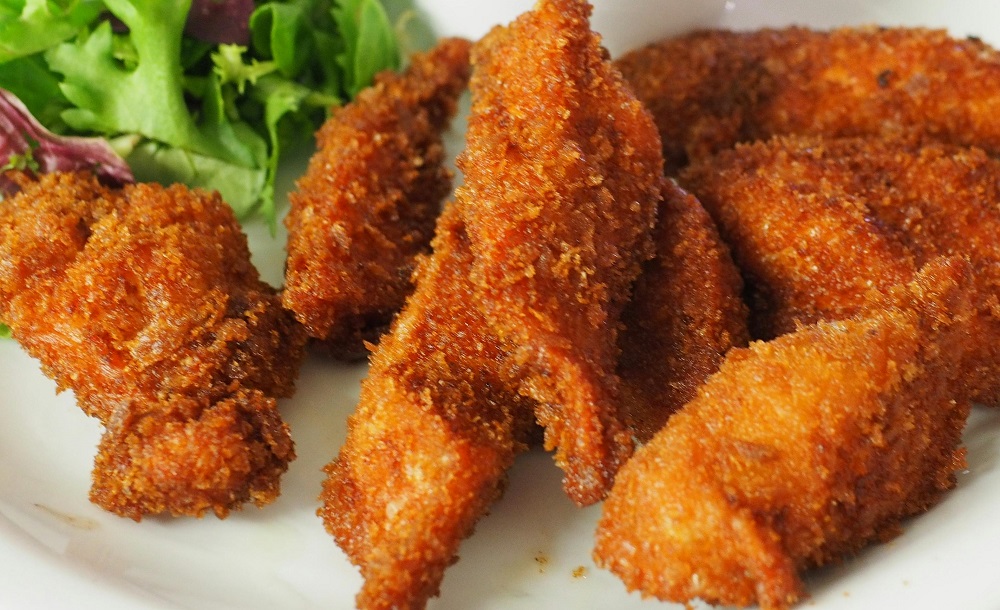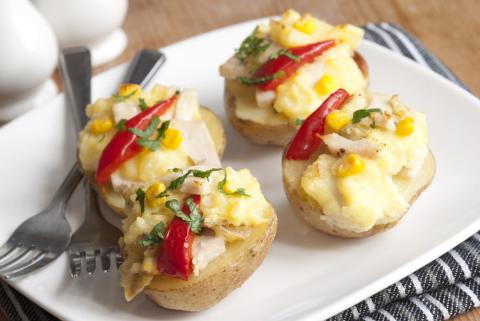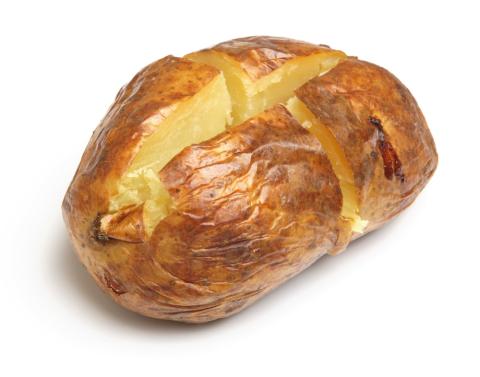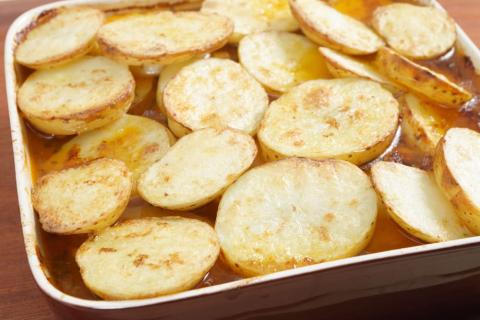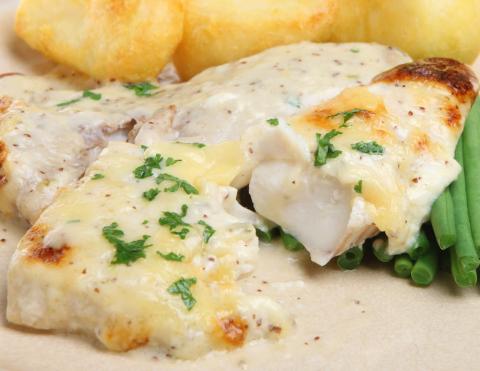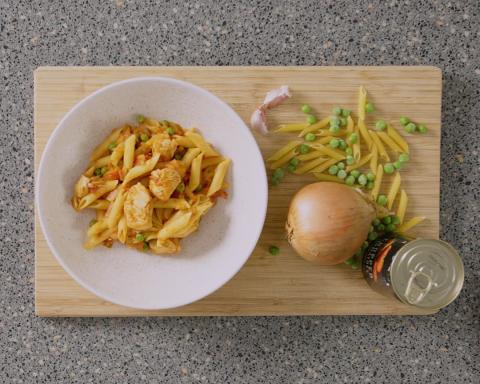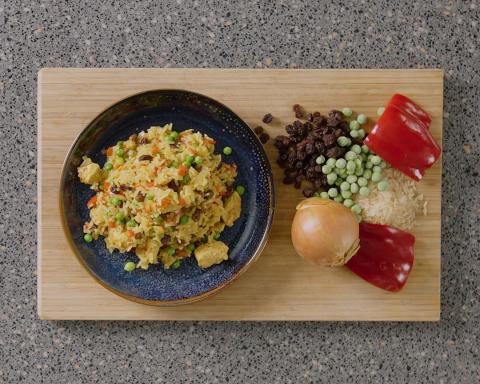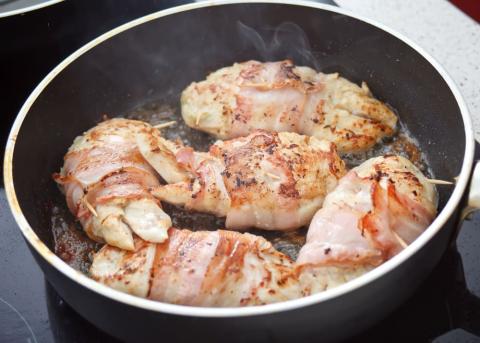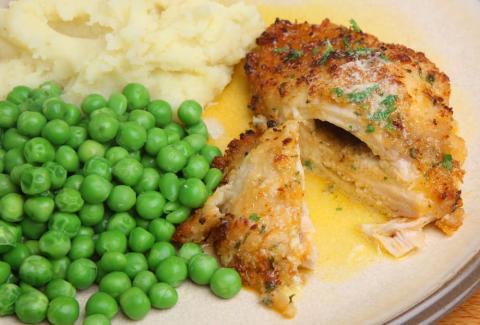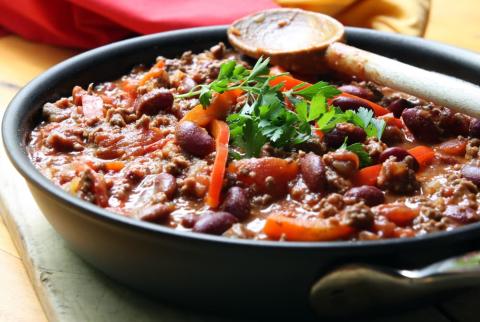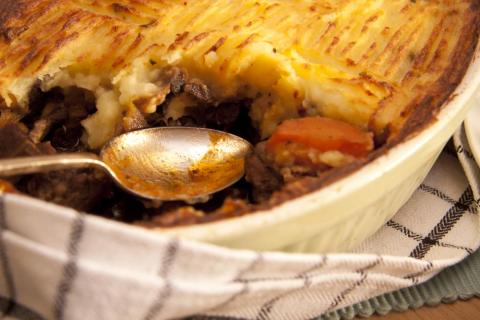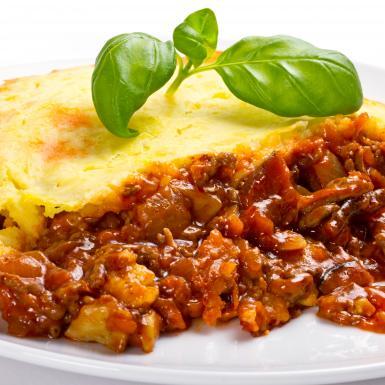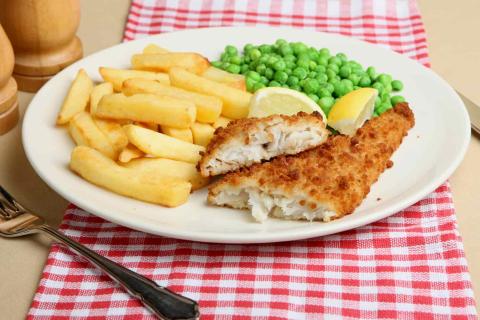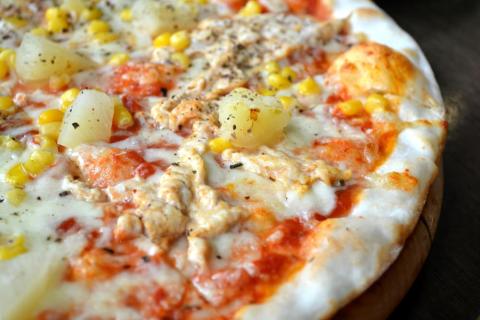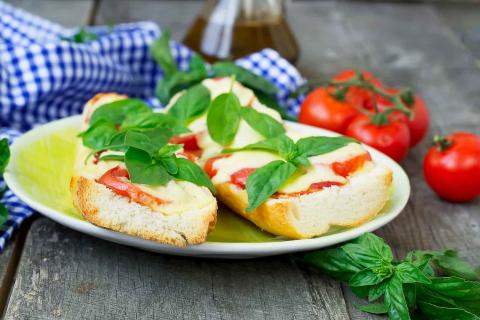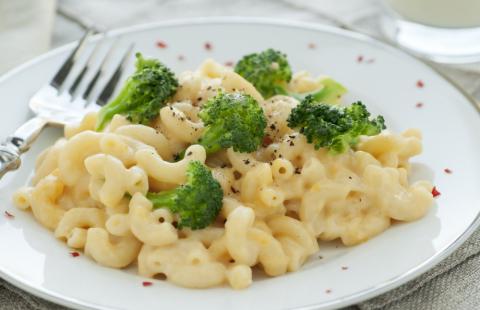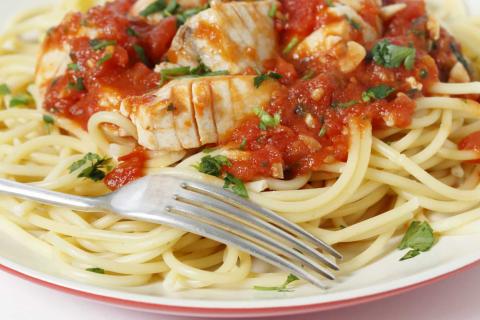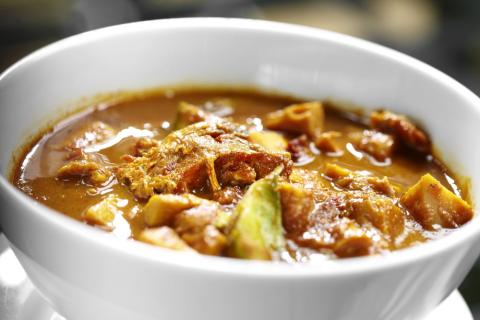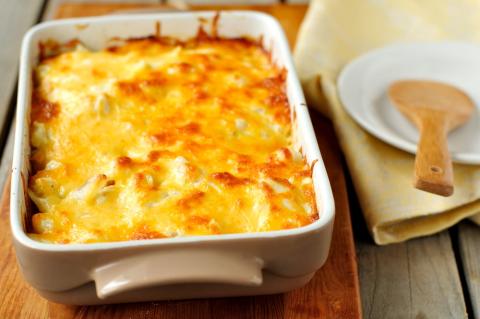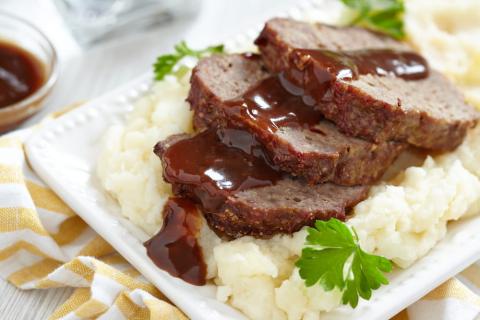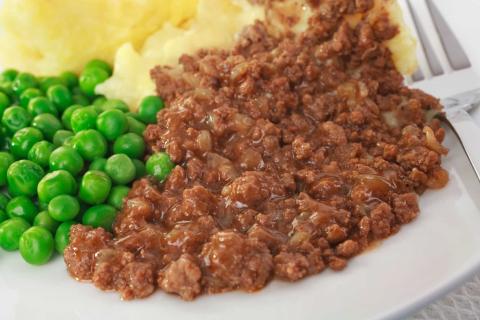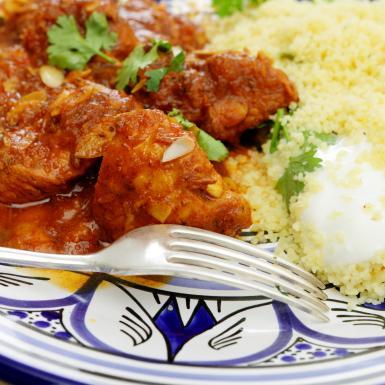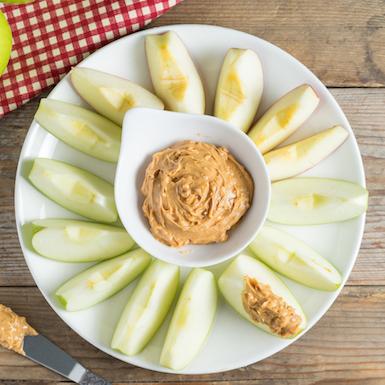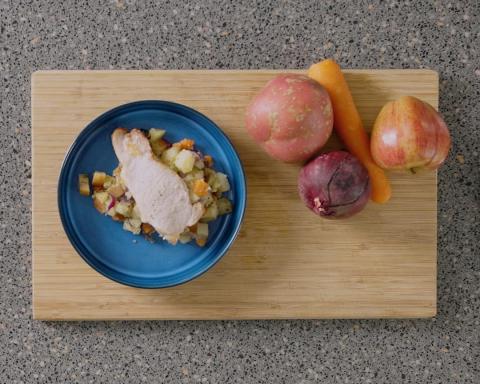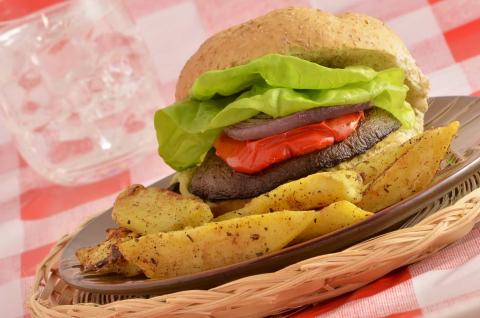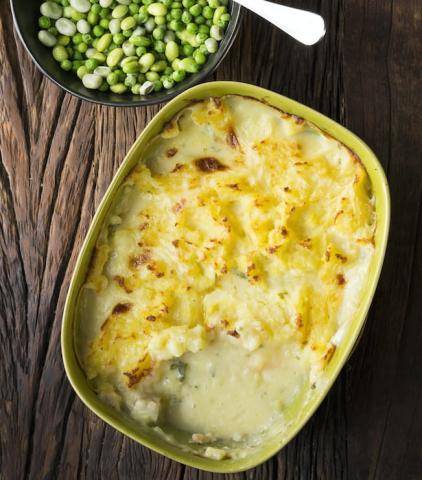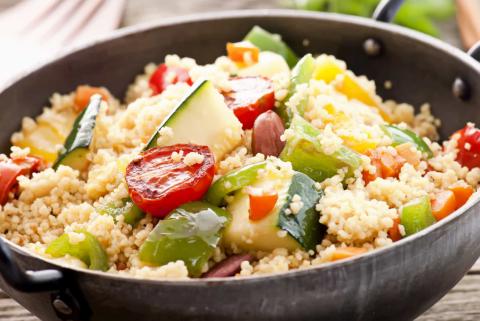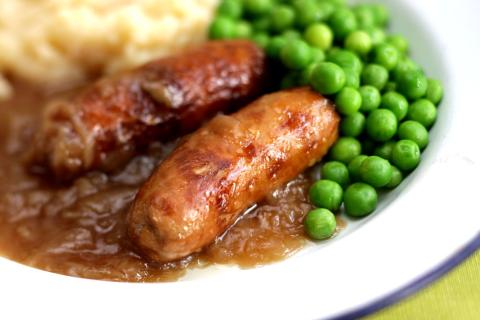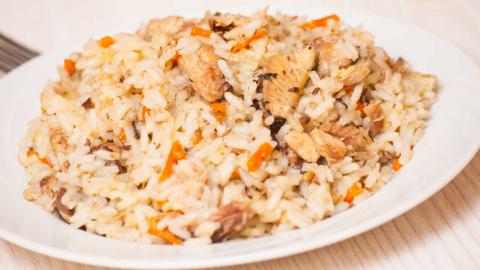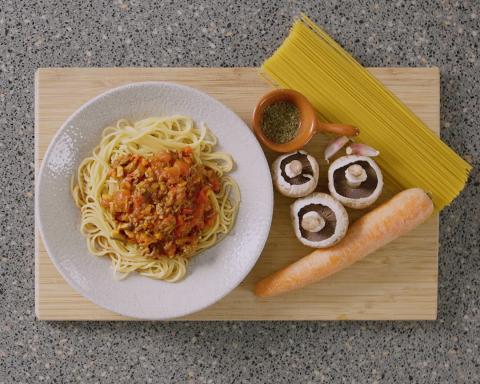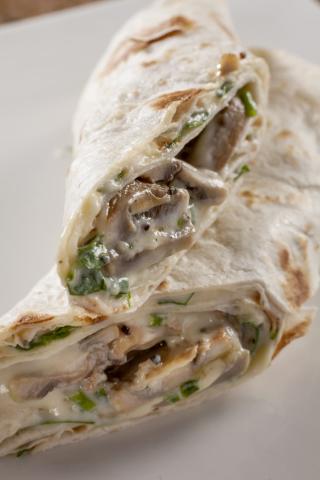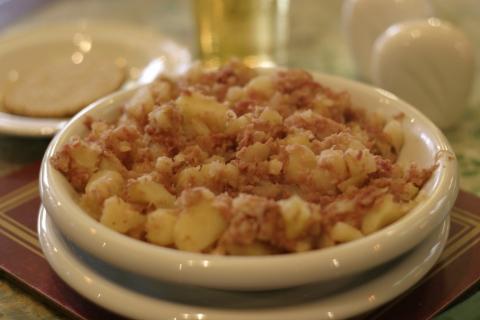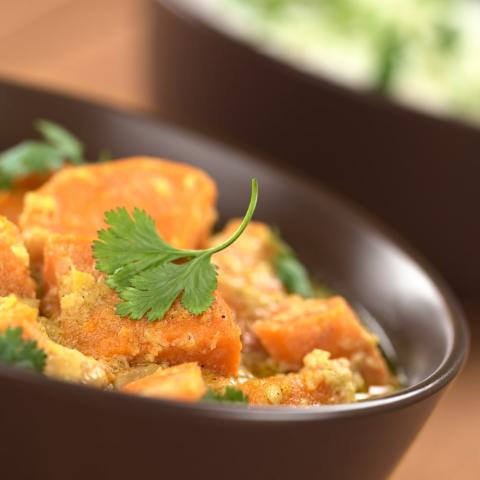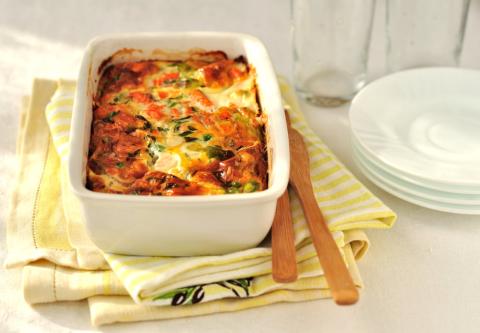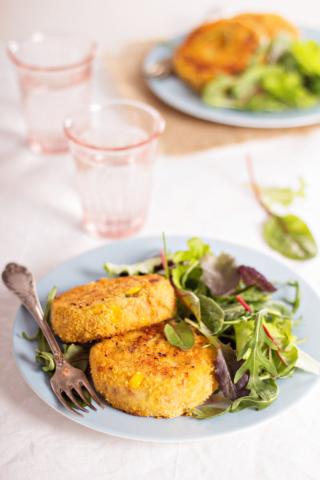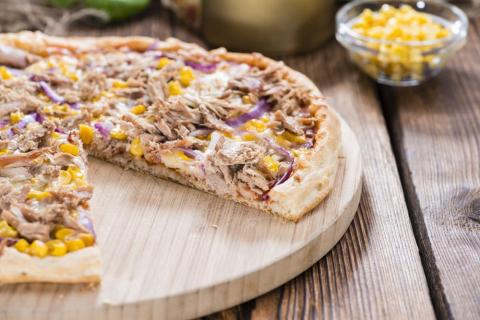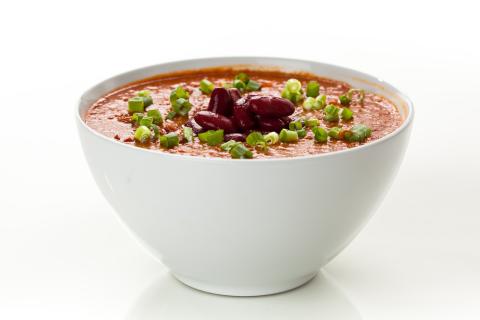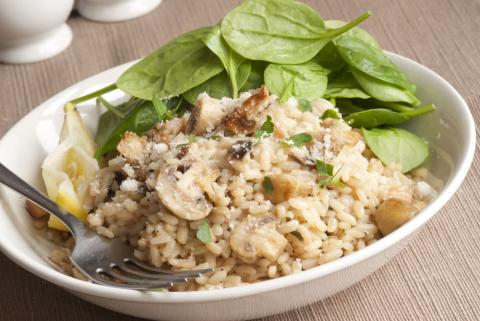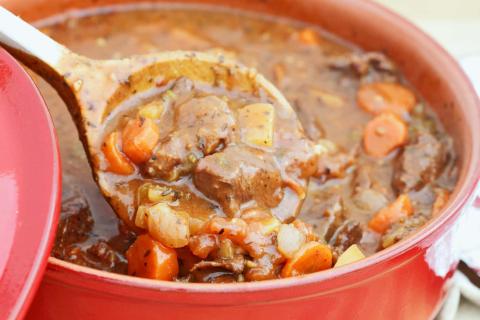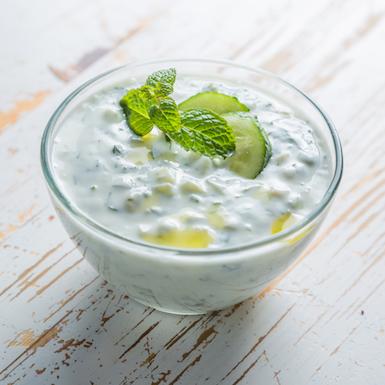- 4 Small (400g) Chicken Breasts
- 3 Tablespoons (60g) Plain Flour
- 1 Medium Egg
- 3 Cups (150g) Breadcrumbs
- 5 Large (1kg) Potatoes
- 2 Tablespoons (20g) Vegetable Oil
- 1 Can (420g) Baked Beans (choose reduced salt & sugar whenever possible)
Ingredients
Allergy Disclaimer
Always check the label of each ingredient for allergy warnings.
Method
- Wash potatoes and then cut in half and then into wedges. Cook in a pan of boiling water for 10 minutes.
- Preheat the oven to 200°C / 180°C fan oven / 400°F / gas mark 6.
- Dice chicken into approximately 2cm x 2 cm cubes.
- Break egg into a bowl and whisk using a fork. Put the flour and breadcrumbs on separate plates. Cover a baking tray with greaseproof paper.
- Coat each cube of chicken in flour, then dip in the egg and roll in breadcrumbs until all surfaces are covered. Place on the baking tray.
- Drain the wedges, then place on another baking tray and drizzle the oil over them.
- Cook wedges and nuggets in the oven for approximately 20 minutes, turning over half way. Ensure the chicken is white in the middle before serving.
- Heat the baked beans through on the hob or microwave and serve with the nuggets and wedges.
Time Saver Tips
Prepare the nuggets while the potatoes are cooking. You can also make the nuggets in advance and keep them in the fridge until needed.
Cost Saver Tips
Keep your eyes peeled for chicken that’s on offer and put it in the freezer. Chicken thighs are cheaper and work just as well in this as chicken breasts. You could even buy chicken in bulk and freeze it for later. Vegetables like sweetcorn and peas work really well from frozen or tinned. Baked beans work well too – basically whatever you’ve got in! To spice it up, why not try sprinkling some chilli powder onto the wedges before baking them in the oven? A great way to use up any leftover bread is by making your own breadcrumbs. Just take six slices of medium bread, toast it a little under the grill, cut off the crusts and slice each piece open so you can toast the inside. Once it’s cooled down, rub between your fingers into crumbs. You could even try using wholemeal bread for a bit of extra fibre.
Tips for Kids
They will love helping to make the nuggets - just make sure they wash their hands after handling raw chicken.
Nutritional Information
Based on a single serving of 499g (% of an adult's reference intake)
Energy
681 kcals ( 34 %)
2,887 kJ ( 34 %)
Fat
1.4 g ( 7 %)
Saturates
113.9 g ( %)
Sugar
10.5 g ( 12 %)
Salt
1.5 g ( 25 %)
Detailed nutritional information
| Per 100g | Per 499g serving | |
|---|---|---|
| Energy Kcals | 136 | 681 |
| Energy Kj | 579 | 2,887 |
| Protein | 8.5 g | 42.3 g |
| Total Fat | g | g |
| Saturated Fat | 0.3 g | 1.4 g |
| Carbohydrates | 22.8 g | 113.9 g |
| Total Sugars | 2.1 g | 10.5 g |
| NSP Fibre | 2.2 g | 10.8 g |
| Sodium | 102 mg | 509 mg |
| Salt | 0.3 g | 1.5 g |
Find out about nutritional labelling
Nutrition labels on the front of packaging
- Most of the big supermarkets and many food manufacturers display nutritional information on the front of pre-packed food.
- Front of pack nutrition labels provide information on the number of grams of fat, saturated fat, sugars and salt and the amount of energy (in kJ and kcal) in a serving or portion of a recipe.
- The labels also include information about reference intakes (expressed as a percentage) which are guidelines about the approximate amount of particular nutrients and energy required for a healthy diet.
- The colour coding tells you at a glance if the food has high (red), medium (amber) or low (green) amounts of fat, saturated fat, sugars and salt.
- The more greens on the label, the healthier the choice
- Amber means neither high nor low, so you can eat foods with all or mostly ambers on the label most of the time.
- Reds on the label means the food is high in that nutrient and these are the foods we should cut down on. Try to eat these foods less often and in small amounts.
Food shopping tips
If you’re trying to decide which product to choose, check to see if there's a nutrition label on the front of the pack. This will help you to quickly assess how your choices stack up. You will often find a mixture of red, amber and green colour coding for the nutrients. So when you're choosing between similar products, try to go for more greens and ambers and fewer reds if you want to make a healthier choice.
 Activities & Play
Activities & Play Behaviour
Behaviour Childcare
Childcare Development & Growing Up
Development & Growing Up Family, Friends & Relationships
Family, Friends & Relationships Feeding Your Baby
Feeding Your Baby Food & Eating
Food & Eating Health & Safety
Health & Safety Mental Health & Wellbeing
Mental Health & Wellbeing Money & Work
Money & Work Online Behaviour & Safety
Online Behaviour & Safety Pregnancy & First Days
Pregnancy & First Days School & Education
School & Education Sleep
Sleep

